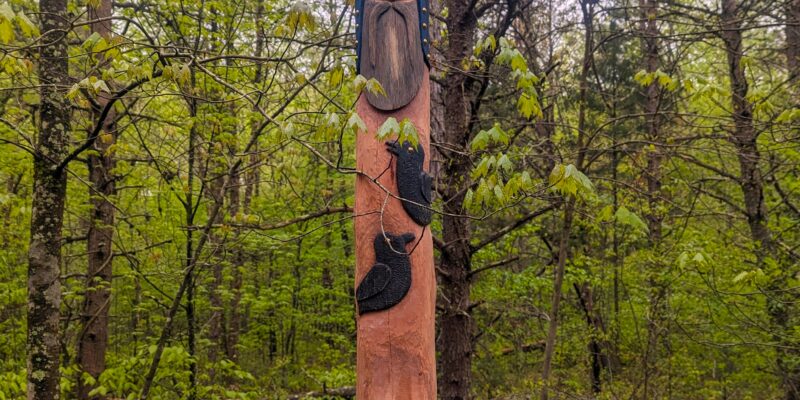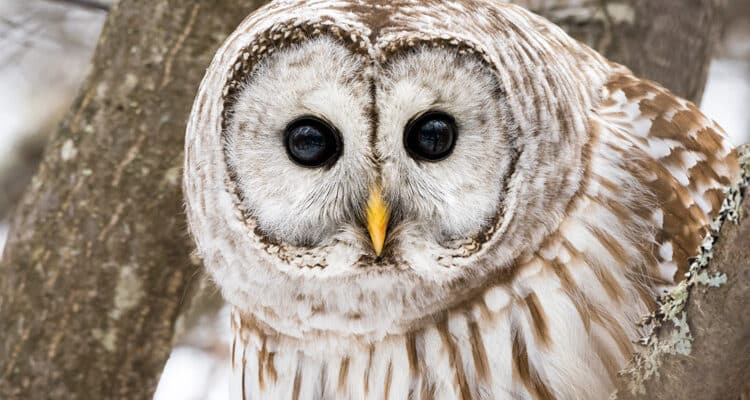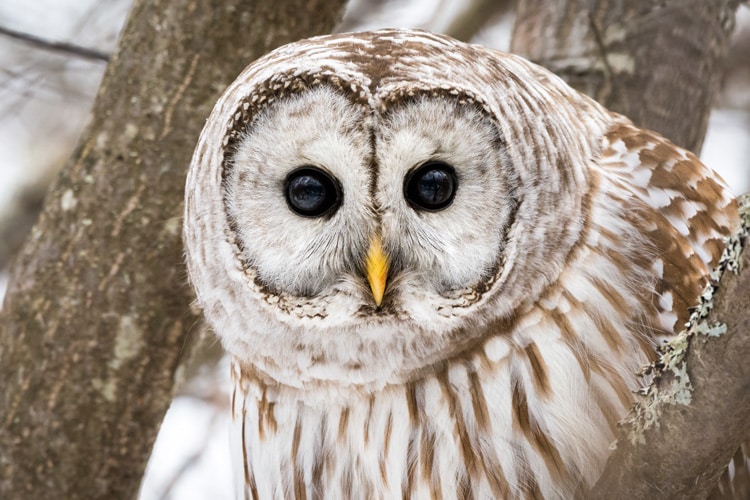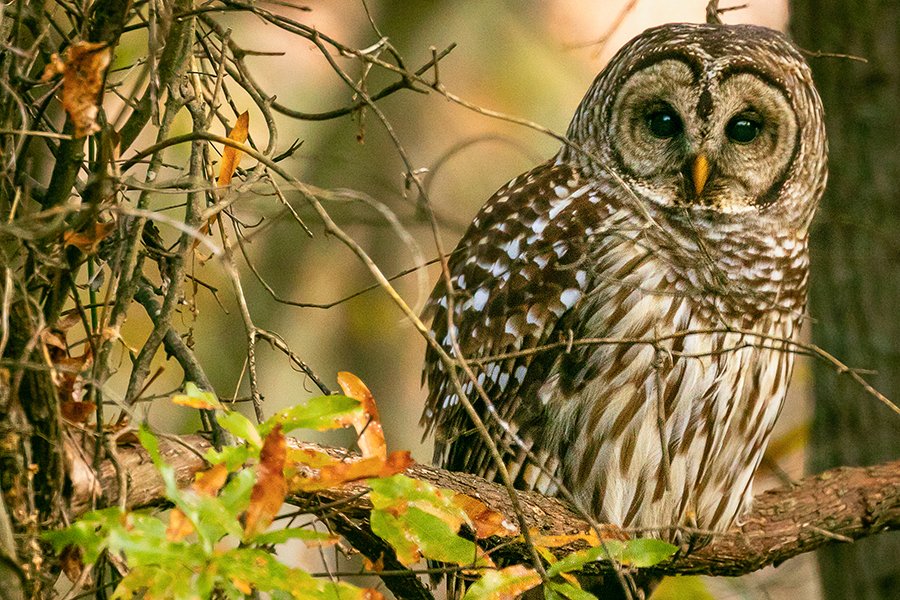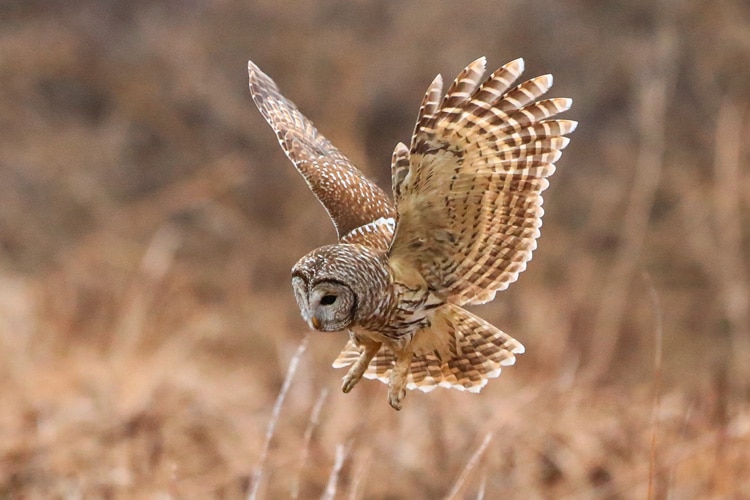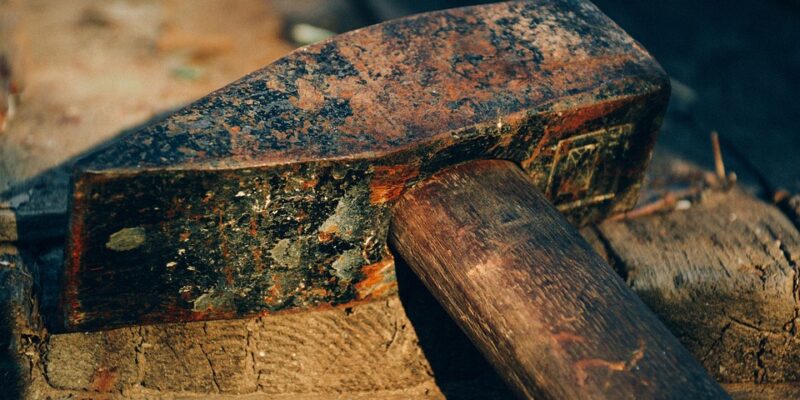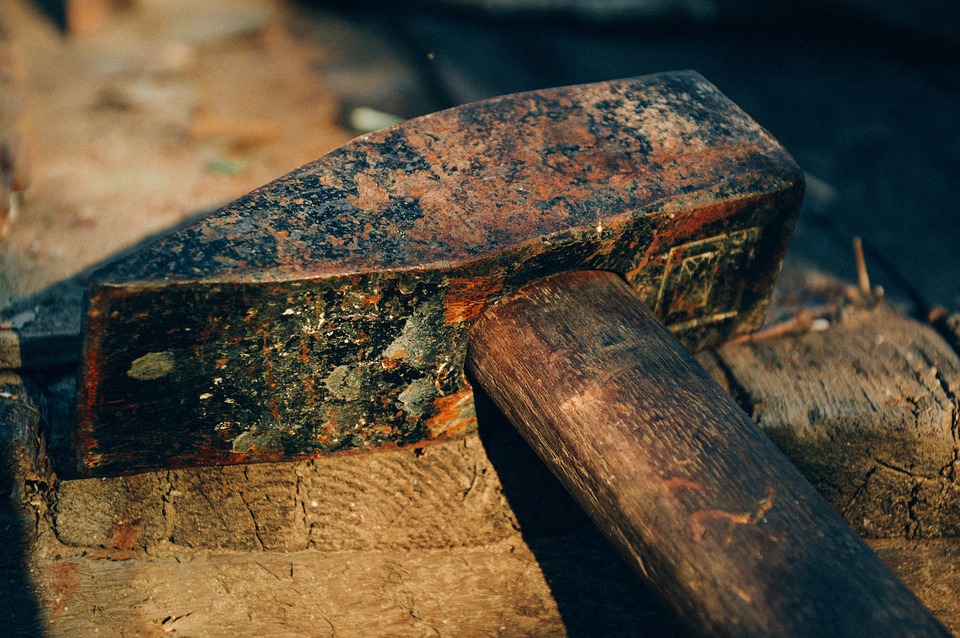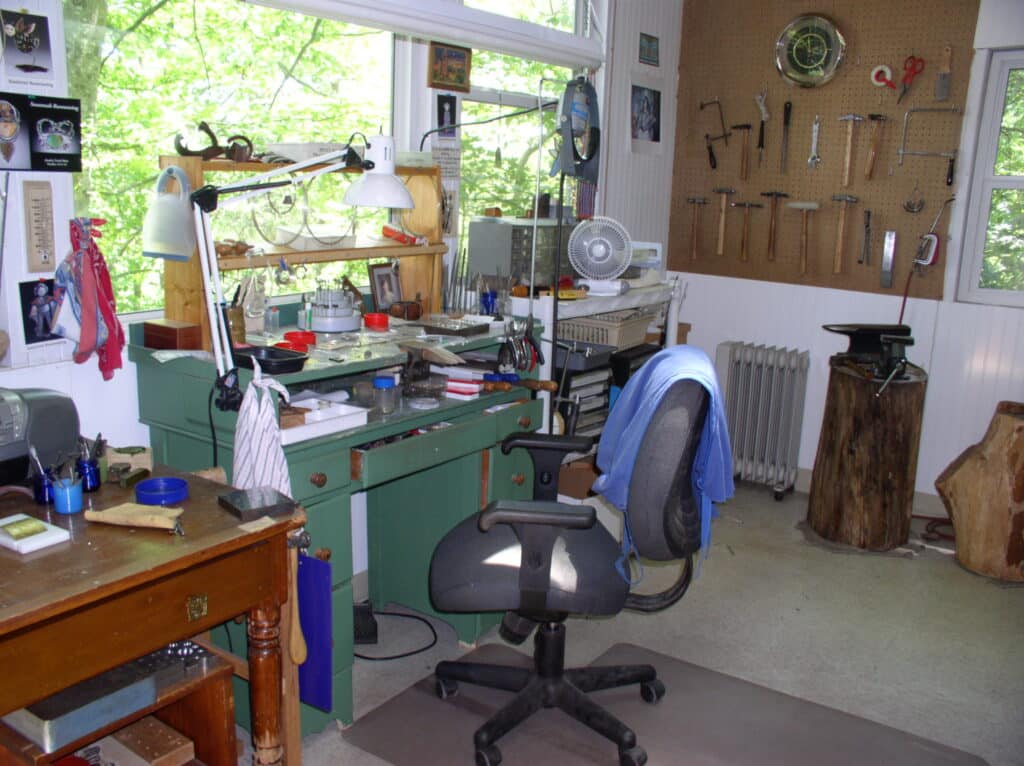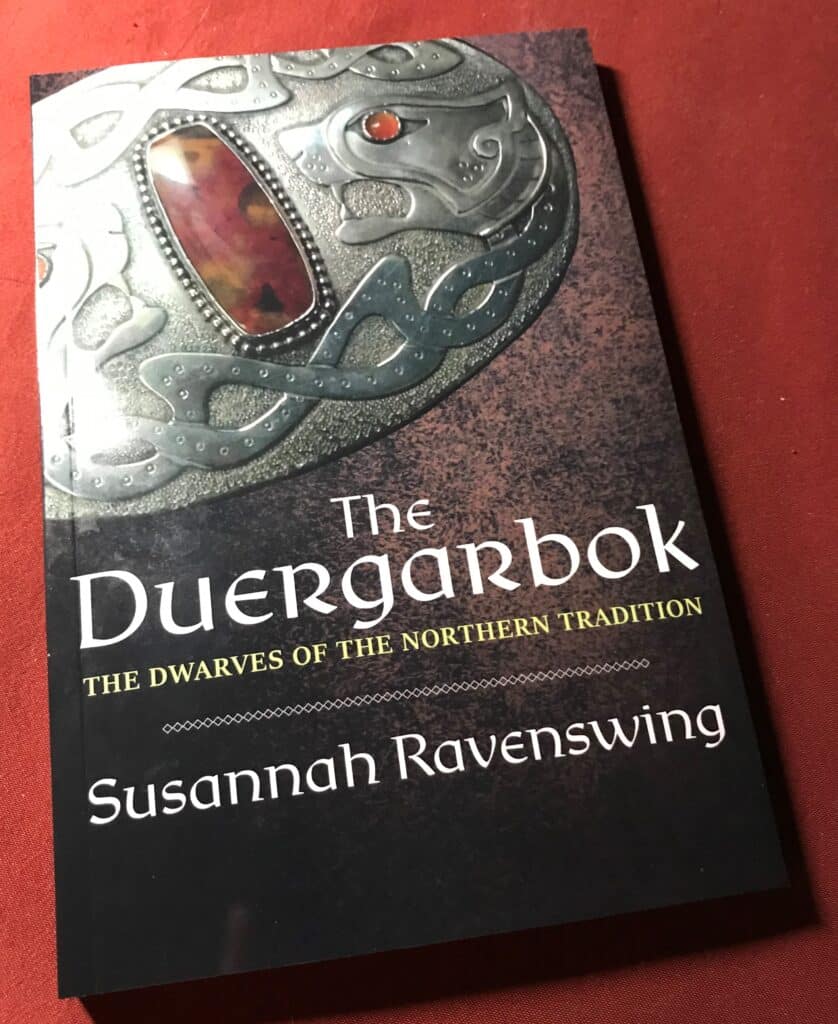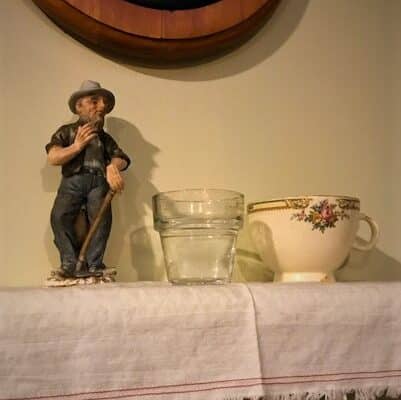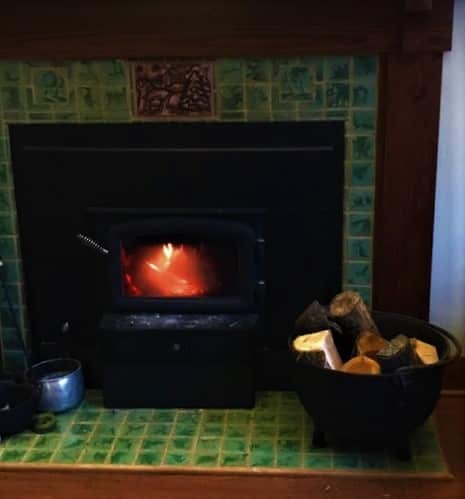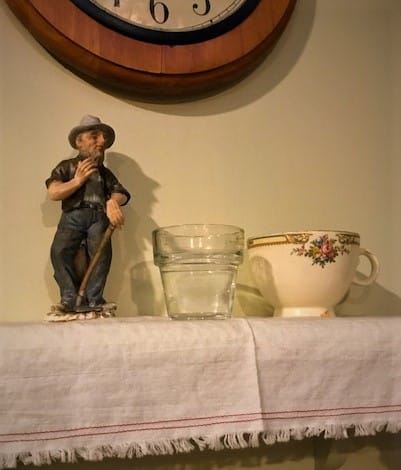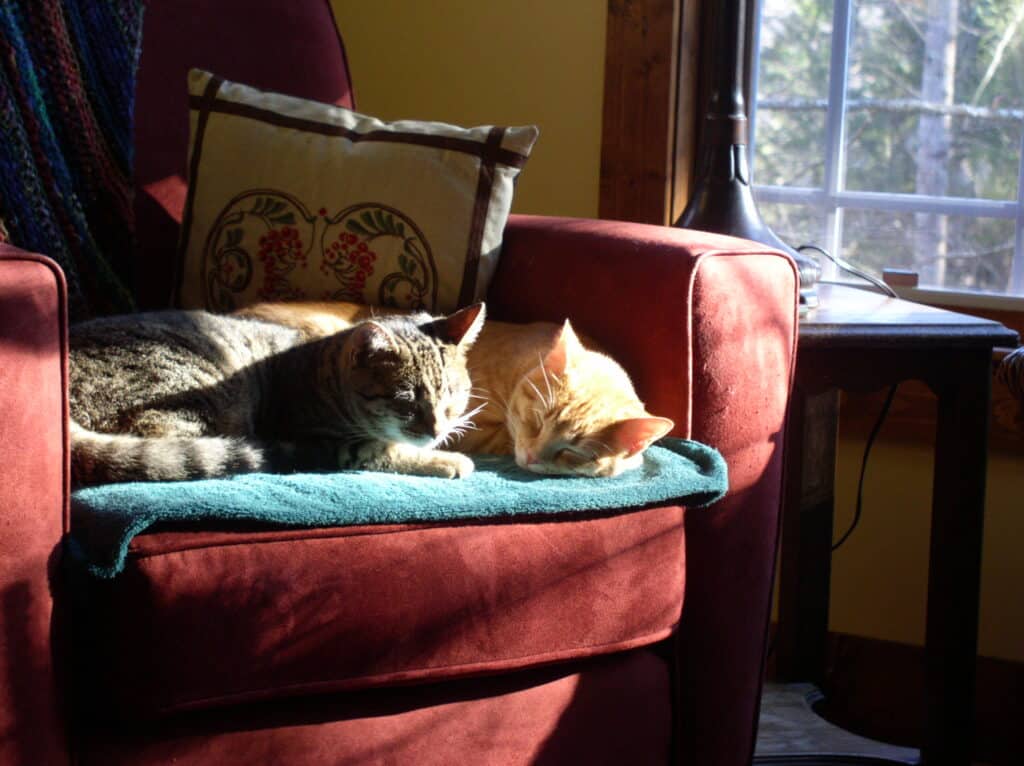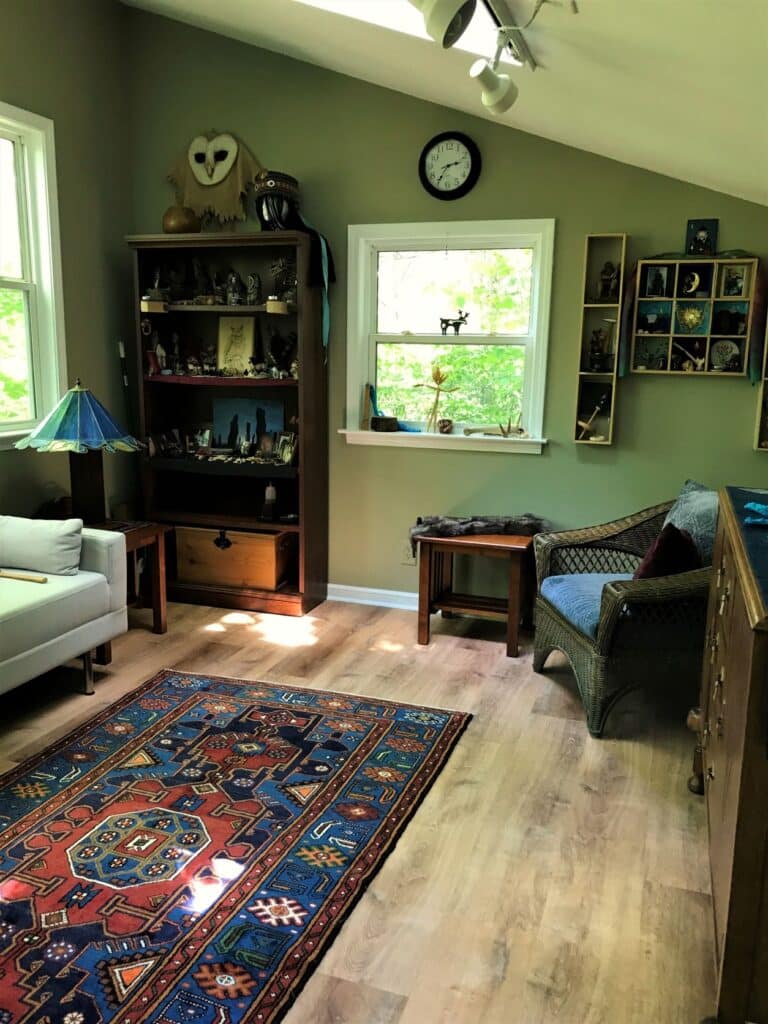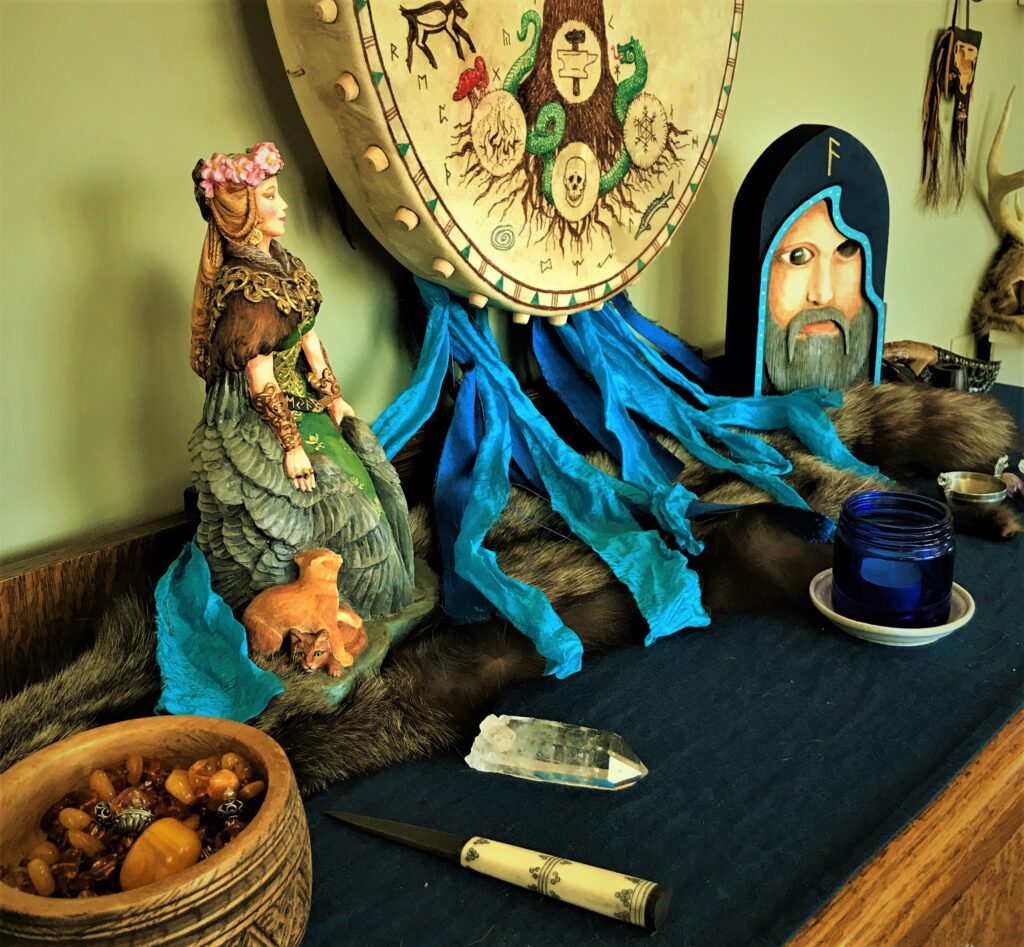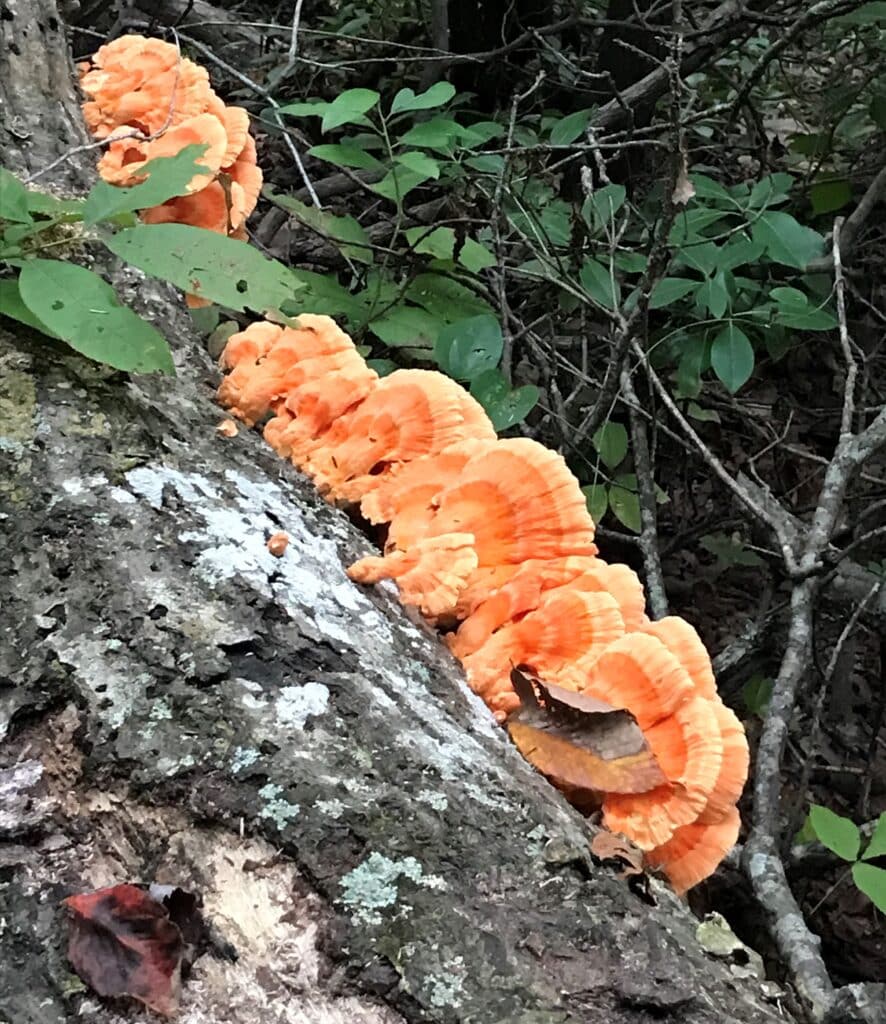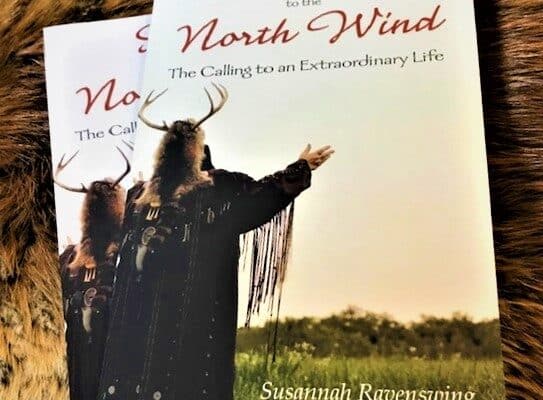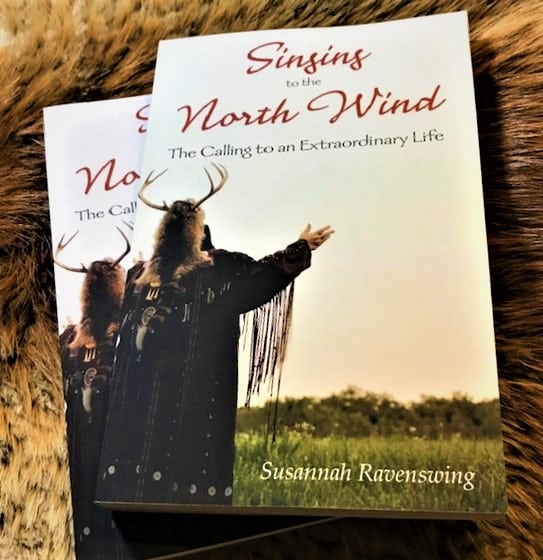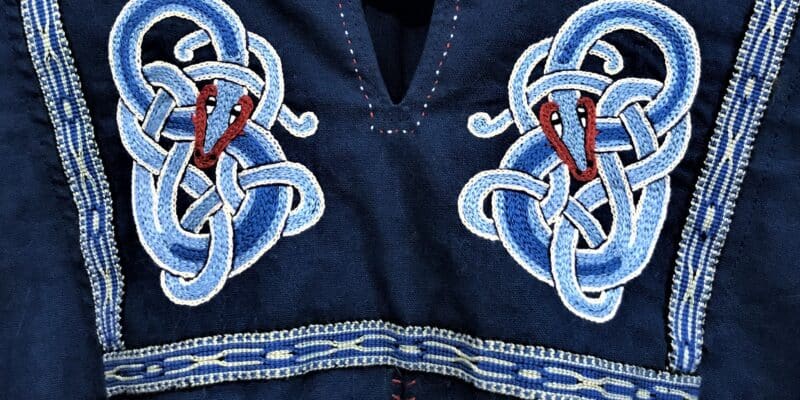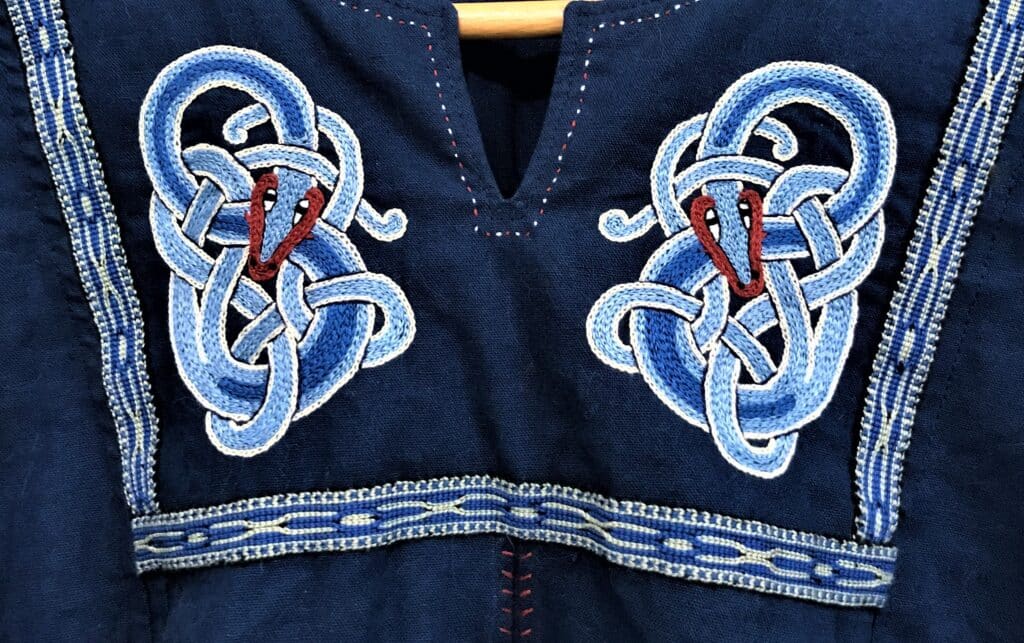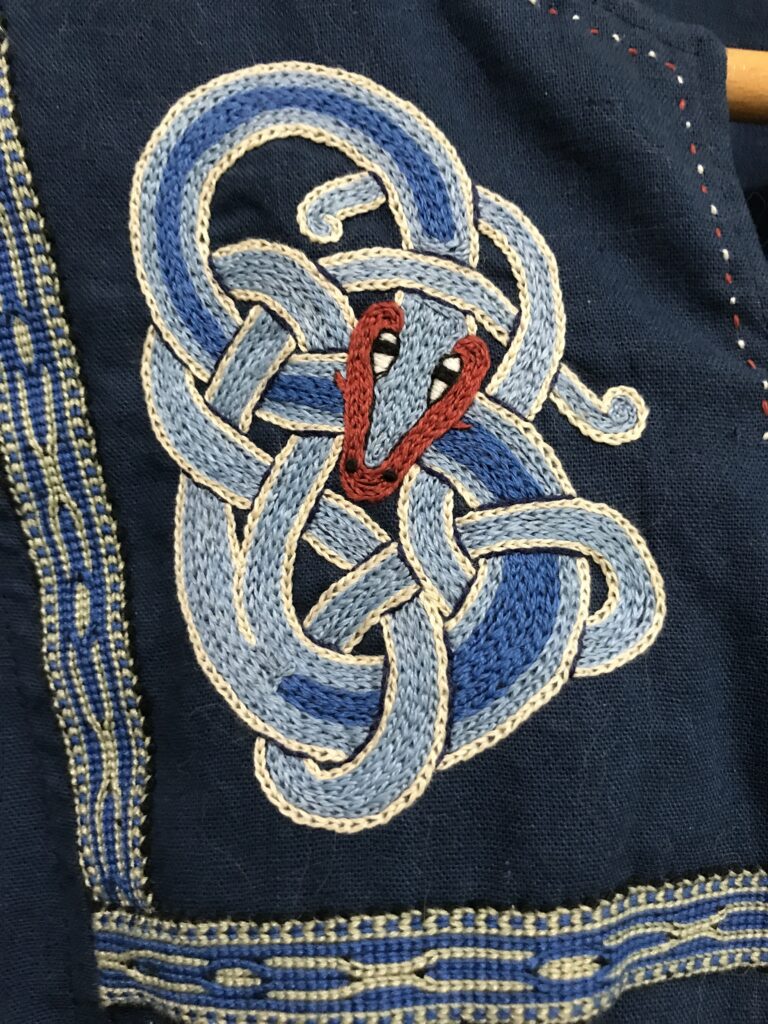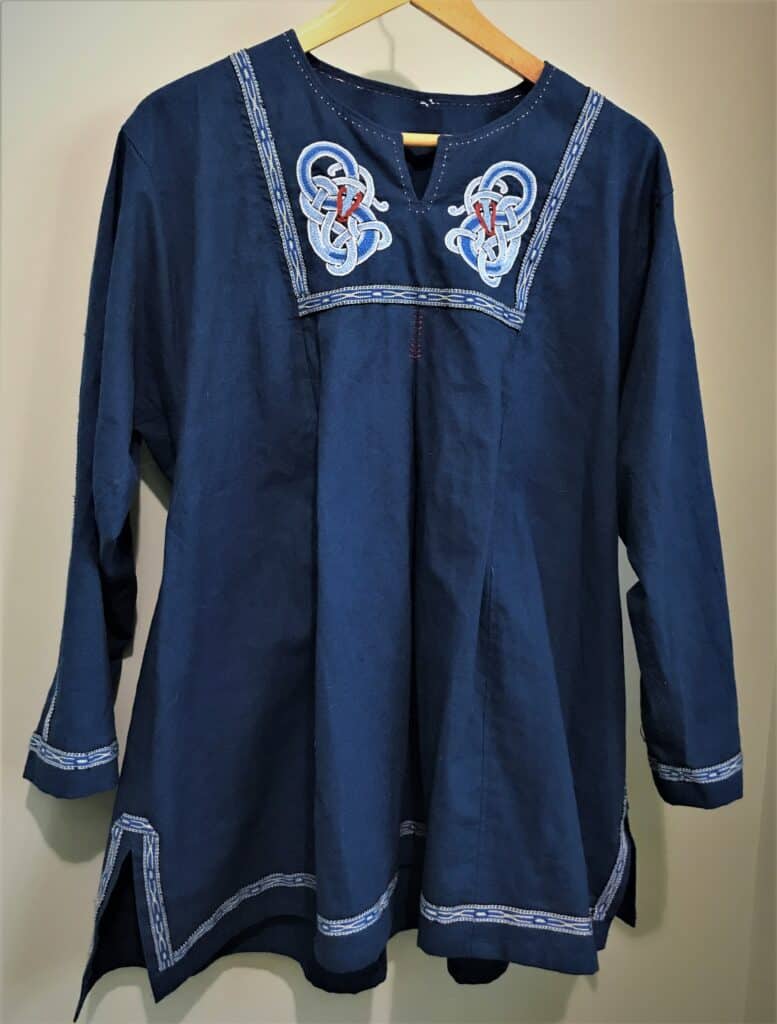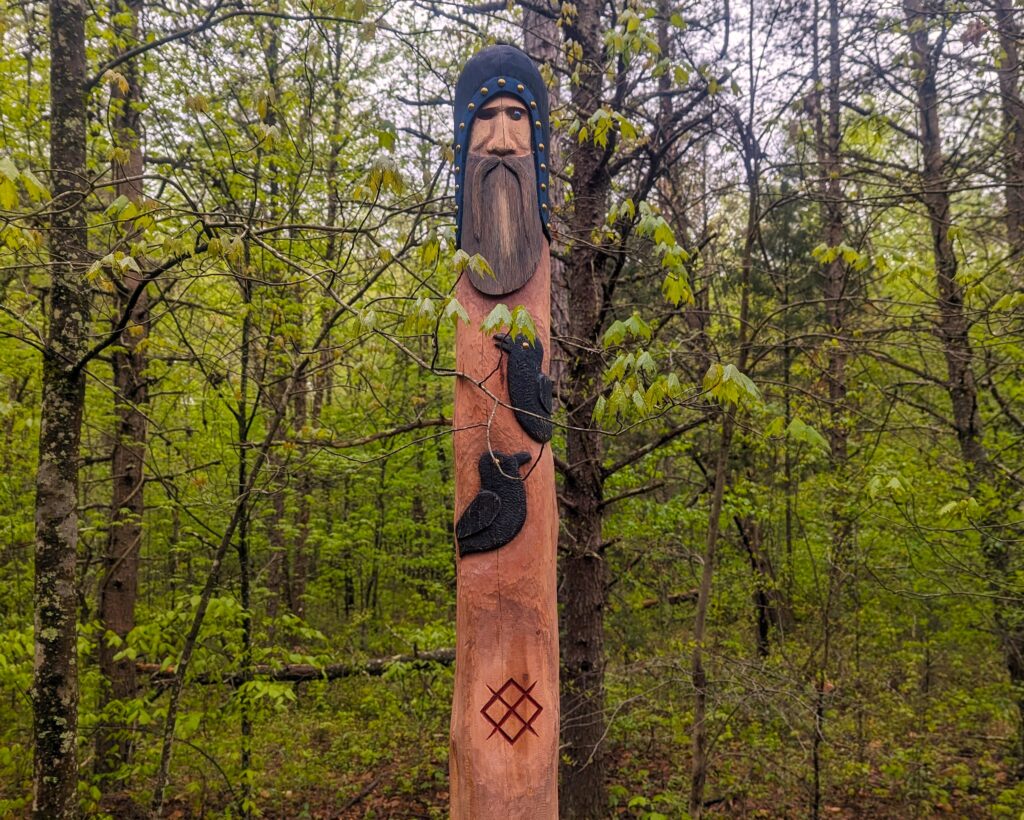
About this time last year, I was the recipient of a very generous grant from the Marianne Oberg Foundation for Sacred Art which made it possible to lean into not one, but two big sacred projects. The first was an embroidered altar hanging illustrating the wolves Skoll and Hati pursuing Sunna (the Sun) and Mani (the Moon). The second and more challenging project was the carving of a large cedar godpole honoring the All-Father, Odin, the third of such large votive carvings I have done. (In 2020 and 2022 we previously raised the poles I carved for the Vanic siblings, Freyr and Freyja.) The godpole for Odin was finally raised and blessed by a group of my Northern Tradition colleagues in an incredible ceremony last weekend here at TwoTrees.
As with the two prior godpoles, Eric and I began by walking the woods, asking for an Eastern Red Cedar of sufficient size willing to be harvested for such a purpose. That tree was honored and its lifeforce released before felling, then carried back to the workshop by my husband and brawny son to rest on work cradles.
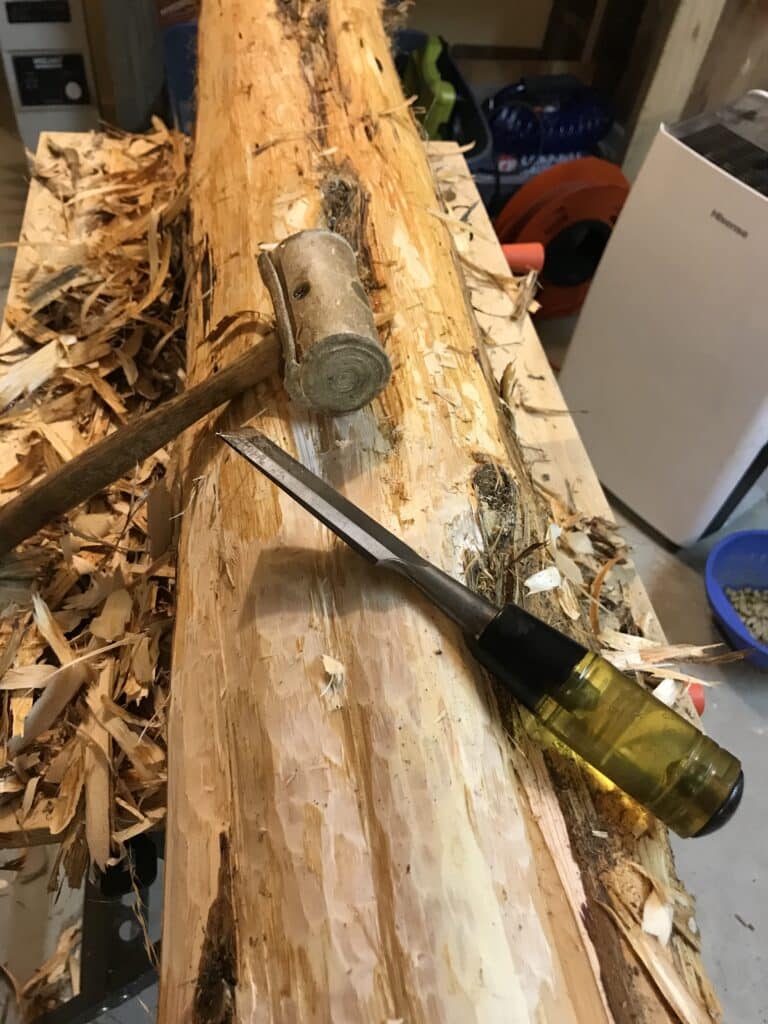
Cedar is covered in layers of papery, stringy bark much valued by the original occupants of this land for cordage and fire tinder. Like other evergreens, cedars are filled with thick, sticky, resinous sap, and that makes peeling the bark challenging. The first several weeks were spent just on the removal of the bark from the tree and the resin from me. Like many cedars in this region, this tree had been invaded by Cedar Blister Rust, a fungus that causes distortion in the tree. Cedars are, by their very nature, very knotty due to the tight, twisted grain in the wood where branches emerge along the length of the tree’s trunk. As I peeled bark and scraped away resin, I asked Odin to show me the aspect of Himself He wanted me to carve, to share how He was lying in that log. Part way up the 13-foot-long log, a burl emerged, and I faced the consideration of whether to remove it or leave it. Ultimately, I left it in place as a testimony to the tree’s struggle to survive.
Once I had removed most of the bark, I took to it with an abrasive disc on an angle grinder to grind away stobs, remove any remaining roughness, and put a uniform texture to the wood. I also used this tool to round off the distal end which would become Odin’s head. While I could have accomplished that with chisels and gouges, it would have taken much longer to no advantage. If there is anything The Old Man has taught me, it’s “Use what works.” Carving a godpole is nothing if not educational and challenging. I love a challenge!
I spent many decades making fine gold and silver jewelry as a sacred smith. Some of those skills transfer to wood carving, but much of what I’m doing, I must figure out on my own. My late father was a master carver, specializing in small animals and humorous figures, but he primarily used a pocketknife, and his works were small. Carving a godpole is a “learn on the job” sort of task that involves listening for guidance from the deity you’re trying to honor, paying attention to the grain and quirks of the wood so you don’t split off chunks by accident, and monitoring your own safety. After all, razor-sharp gouges that will slice through wood will also slice through human flesh.
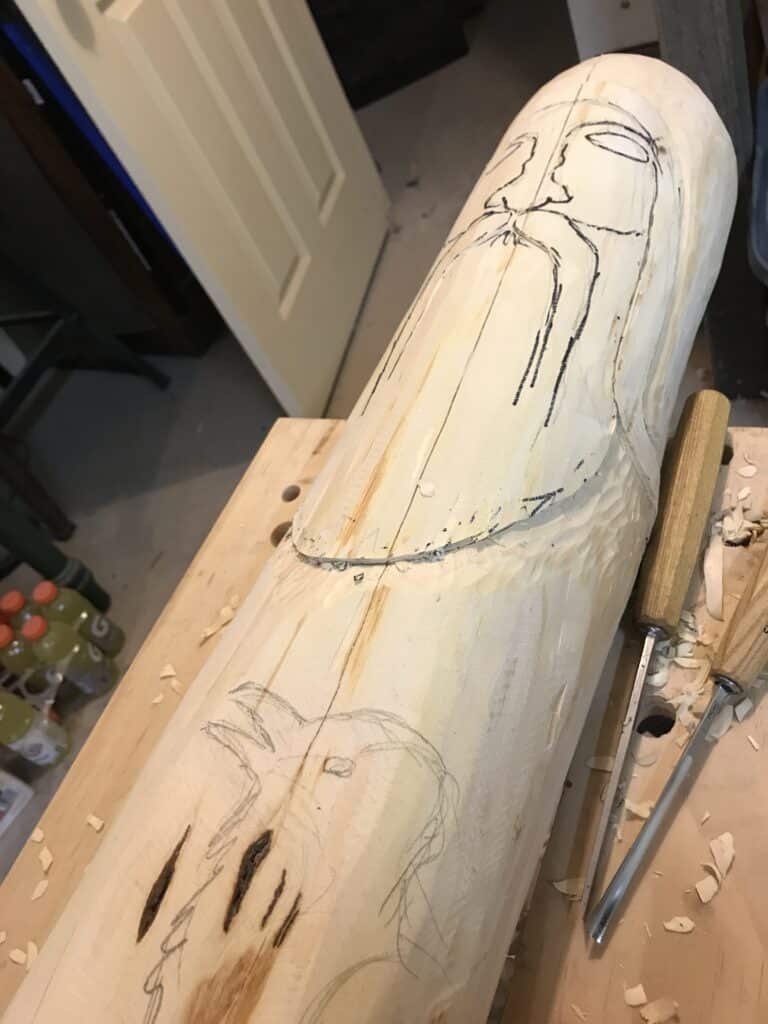
With the guidance of the wood and images from Odin, I decided to carve Him with His ravaged eye half hidden by a fold of His cloak, accompanied by His ravens, Hugin and Muninn, who bring Him news of the Nine Worlds each day. I sketched this image on the log and started by using various chisels and gouges to outline the image I wanted to reveal. Unlike working in clay, where you build up contours, in woodcarving, you gradually cut away material until you reveal your chosen image. The challenge is not to cut away too much!
Carving chisels are flat and come in a variety of widths. Mine range from 2 millimeters up to a 1-inch-wide beast that chops through tree flesh. Gouges may be curved or V-shaped and come in a huge variety of curvatures and widths from the shallowest arc to deep U-shape. Some can be held and manipulated with one hand; others require two hands or even a hand and a mallet. Carving is all about edges and wedges and leverage, about sensitively directing force using a tool to alter the shape of the wood as desired. I had ideas but trusted the log and the All-Father to guide me as I progressed. And there’s the constant sharpening and stropping to polish the cutting edge of the tools; dull tools just “tear” at the wood and make carving a miserable process.
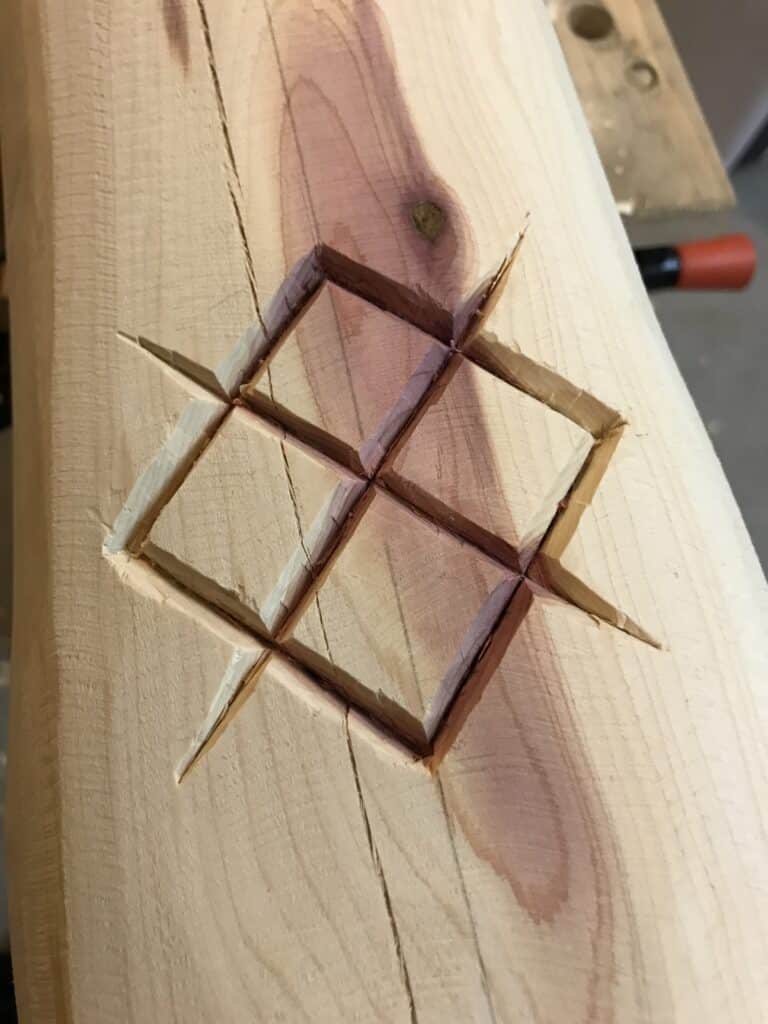
Since it had been some time and I felt rusty, I decided to start by roughing out the two ravens. At this point, the log was about 11” in diameter, so I had to render them taking the curvature of the tree into consideration. Their forms are simplified, but I was able to carve them with wings and beaks and even show the detail of feathers in a simplified way. Sliver by sliver, shaving by shaving, I removed the surrounding wood, until they stood in low relief. Some days I carved for an hour or two, bent over the log, back aching. Some days I carved for four or five hours, lost in the fugue of creation, what the Norse Dwarves or Duergar refer to as The Maker’s Trance. I also chose a rune to mark the godpole, as I had for Freyja’s and Freyr’s. For Odin’s pole, it had to be the rune Gar, also referred to as Odin’s spear and the Mystery Rune. This I carved in deep v-grooves into a flattened place on the front of the log.
Of course, the Duergar, Master Craftsmen of the Nine Worlds, had their say. They had long offered criticism and guidance to my jewelry work, so why not this craft too? “Cut with the grain,” they whispered, “never toward yourself”. “That’s off!” “Start over!” And finally, “Not bad…”
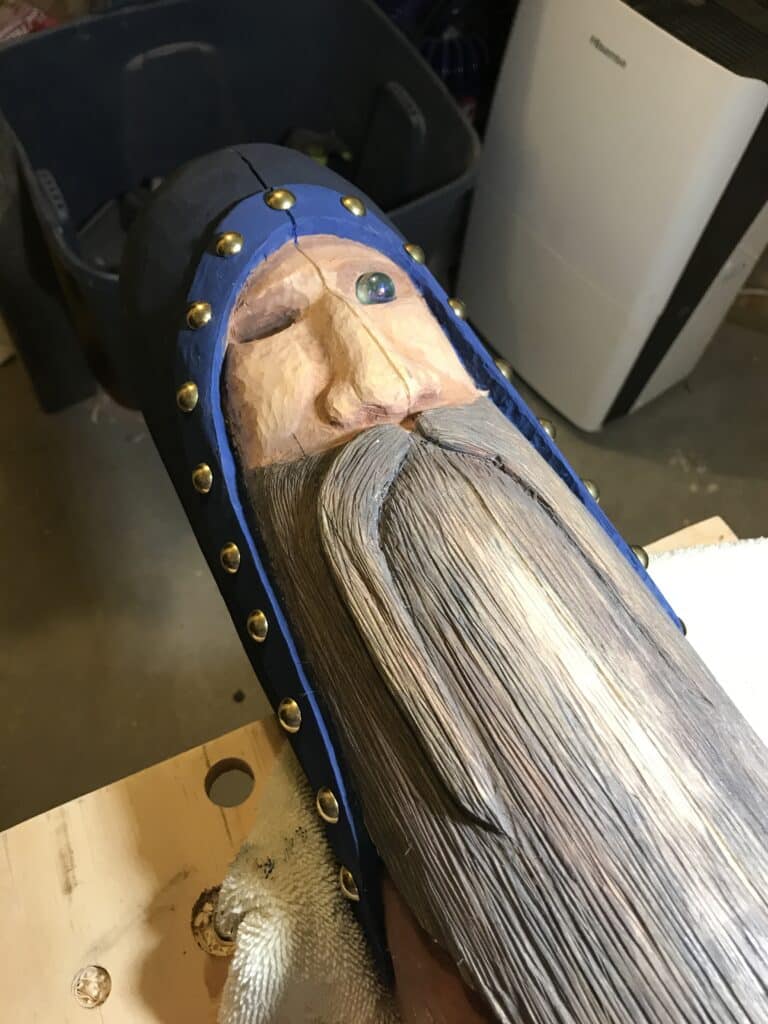
For four long months I carved most days, and slowly Odin and his ravens emerged from that log. There came a day when I knew the carving was finished. I studied the image and realized I wanted to add color, but only naturally available pigments: black from charcoal, dark blue from ground lapis, blood red from red ocher. I created stains with these pigments and the open, unsealed wood accepted them, coming to life. The ravens became glossy blue-black, the same color as Odin’s cloak, which also got a dark blue decorative band. The stain brought out the cragginess of His face, the dark hollow from which He tore His eye to offer for the wisdom of the runes, and his long, graying beard. I used the deep red of the ocher to stain the Gar rune: the red of passion, of sacrifice, of lifeblood. And for Odin’s good eye? A sparkling blue glass sphere inlaid in the wood.
A gathering was scheduled at TwoTrees in late April to celebrate the elevating of one colleague to the next level of practice, and in our tradition, such occasions are often accompanied by deep challenges, ordeals of spirit which yield profound personal revelations. Two of the spiritworkers attending were Odin’s folk. With the previous two godpole raisings, the celebration included Eric and I and a few local friends, but never before had we undertaken this deeply emotional task with other Heathen folk, spiritworker colleagues who honor the Gods we do.
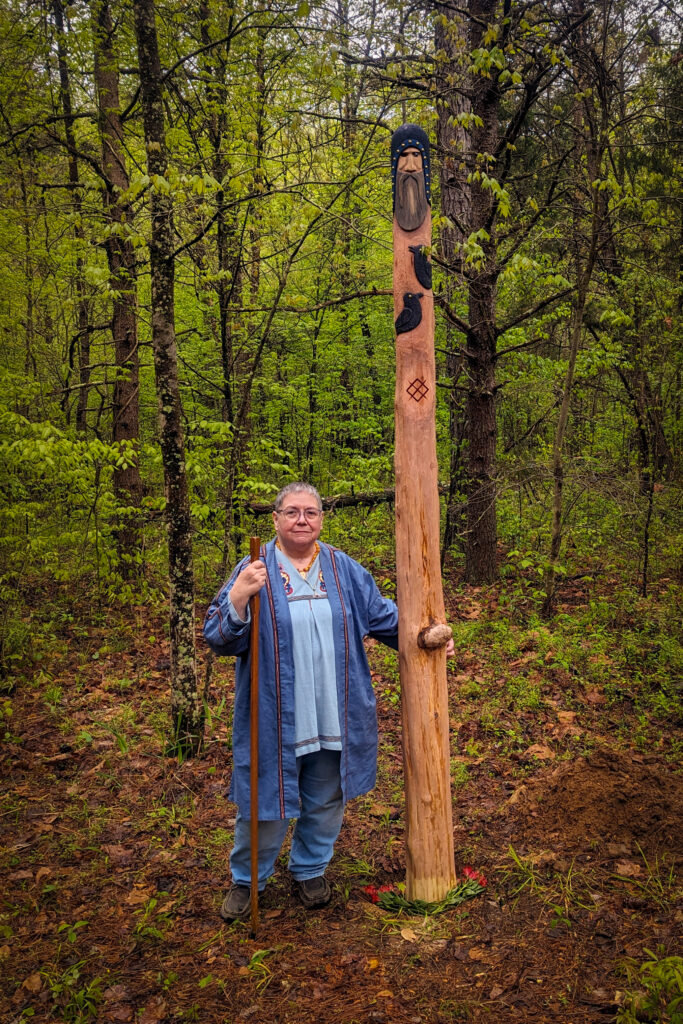
The space, a clearing in the forest dedicated to the All Father, was prepared, a hole dug, a fire lit in the sacred way. On the morning of the ceremony, we gathered to state our intention, to make offerings of sacred smoke, water, barley, and milk to the Holy Powers, and to hail our Gods and Ancestors with song. Then, as I drummed a heartbeat rhythm, the godpole, with the carved end carefully covered, was reverently carried down the long, winding path to where it would stand. The senior Odin’s man invoked Him with wholly appropriate intensity, as others of us used our drums to raise and direct energy to him for that process. We poured our offerings into the hole: precious stones, mead, tobacco, milk, and with great tenderness, removed the cover to raise the towering image. The space around the foot of the pole was backfilled and tamped and then we all stepped back, our eyes flooded with tears.
We know that our Northern ancestors honored trees as sacred and often designated certain trees as places of connection with the Divine, places for leaving offerings, making prayers, or offering petitions. Various historical sources also note that they created large votive images from wood, some of which were housed in temples such as the well-attested one at Uppsala, or simply in holy places. It gives me great joy to continue that tradition by creating votive carvings of our Gods to stand watch over forest glades where others of my faith can engage with the Holy.
